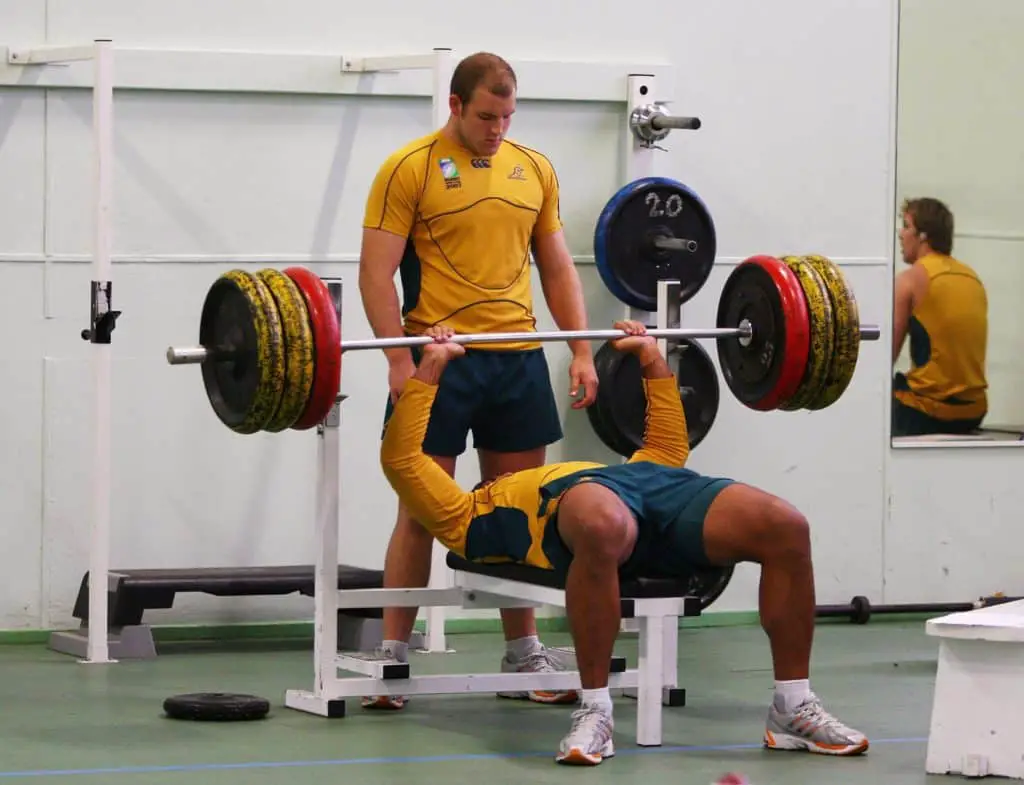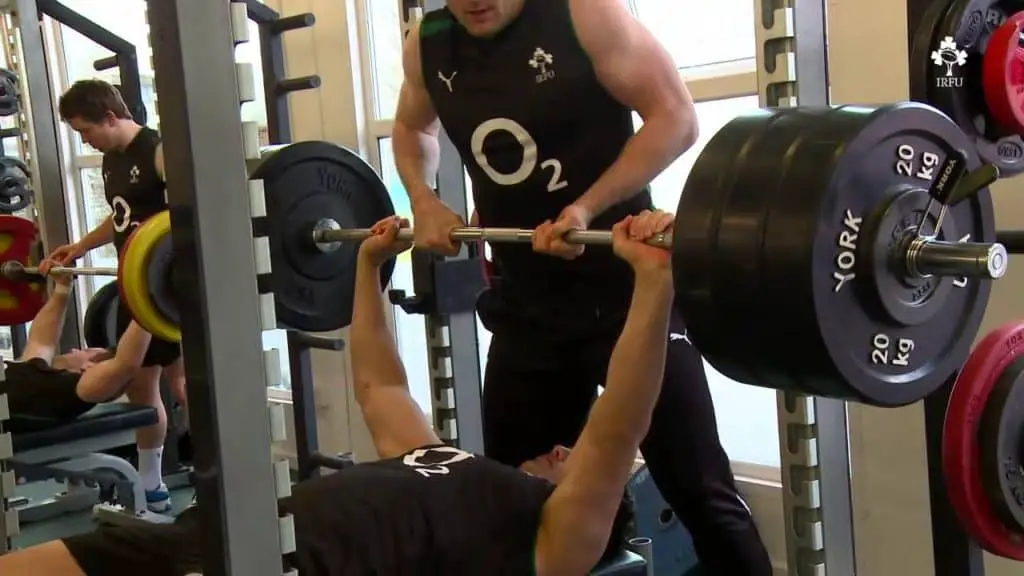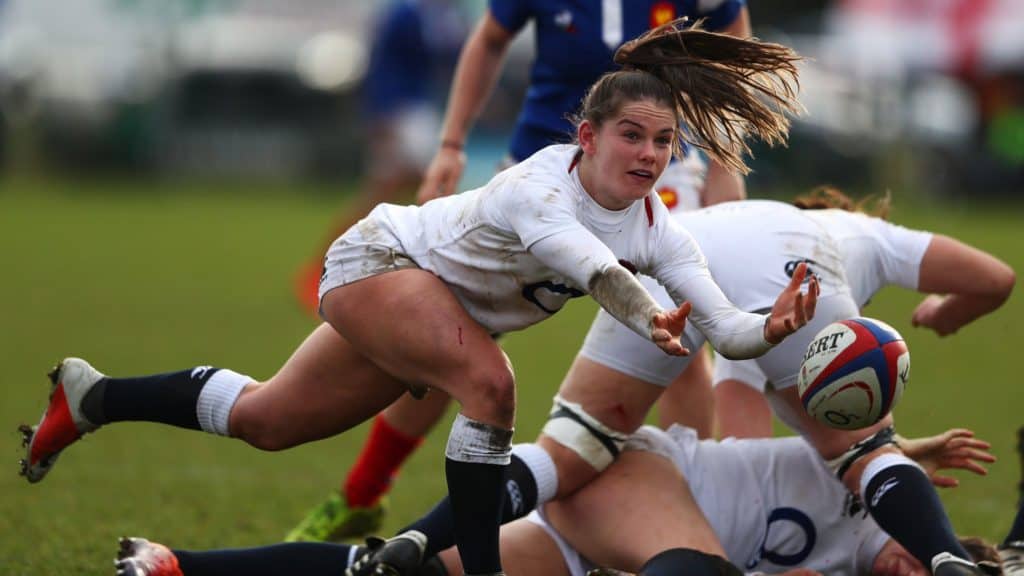
Rugby is a contact team sport and to fulfill your full potential of a player you need to be practicing the sport alongside your teammates. Certain aspects of the game such as lineouts, scrums, rucks, backline plays and tackling need to be trained with other rugby players.
If you want to be the best rugby player possible you will need to regularly attend team training, at minimum once a week but the more the better. However, that doesn’t mean you can’t develop your rugby skills off the pitch during solo training.
Can you train rugby by yourself?

You can improve your rugby skills by training yourself. Rugby players need to be fit, strong and fast. They can be developed alone in the gym/running track. Rugby players need specialised skills eg. ball running, passing and kicking, these can be trained to a certain extent by yourself through specific drills.
Here is how you can train rugby by yourself and take your rugby skills to new heights!
Follow A Weightlifting Program

Rugby players need power, muscular endurance and maximal strength. These attributes are best developed in the weightroom. The great news is you don’t need your rugby strength coach or 14 of your teammates surrounding you to lift weights and develop your power and strength.
Rugby players need to follow a blended program. Bodybuilding style accessory exercises can be beneficial for players looking for some muscle mass or correct imbalances. Powerlifting movements are great for maximal strength. Olympic weightlifting and plyometric movements are best suited for developing power.
If you are looking for a particular program to follow check out this program.
If you want to design your own program then hit the gym 3 times a week and perform a mixture of the following exercises.
- Squats – front, back, jump
- Deadlifts – conventional, sumo, Romanian
- Hang cleans
- Power Snatch
- Strict & push press
- Pull ups
- Bent over rows
- Plyometrics
- Medicine ball slams
Improve Your Fitness

Rugby players don’t just need Herculean strength they also need the ability to compete for the full 80 minutes. A 200kg squat is useless if you’re never close enough to the ball to make an impact on the game or regularly get caught out of position. Now, while rugby match fitness is best developing through playing rugby it can be effectively developed through solo training away from the rugby field.
Try out these different forms of rugby specific cardio. Once you can hit the standards on these workouts you will know you are ready to conquer the rugby world.
Give Sled Training A Go!
While squats and other exercises in the weightroom can increase your leg strength it is not as specific for rugby as sled training. Sled training can more effectively mimic the leg drive motion rugby players need to perform during scrums, when tackling, rucking and mauling.
Pushing a sled won’t only build rugby player’s muscles but it will also cause their endurance and cardio to skyrocket.
Remember don’t stack too much weight on the sled. You are aiming to build explosiveness to help you drive your opposition off the ball at the breakdown or force them back in a dominant tackle. If you overload the sled you will develop static strength which is less beneficial on the rugby pitch.
Develop Your Speed And Agility

No matter if you are a prop or a winger, all rugby players need to be quick and agile. The strongest rugby player is useless on the rugby pitch if smaller, weaker players are able to effortlessly evade him and get to the ball first.
Speed and agility can be developed through solo running drills. These can easily be done at your local park or running track.
Here are some tips on how to increase your speed on the rugby field. Rugby players should focus on sprinting over distances of 10m, 20m and 40m. These are the most common distances covered during a rugby match.
Agility can be trained through using a variety of cone drills. The L shaped 3 cone drill is a particularly common one.
Rugby players can create their own specific agility drills by placing cones representing defenders at different intervals and practice different steps, spins, hopping and other evasive maneuvers.
The important thing to remember when training speed and agility is that it is not a conditioning workout. If you are not running at close to top speed due to fatigue you are not developing your speed.
When doing a speed workout ensure that you are well rested before the workout and that in between your sprint drills you are taking ample rest (2 minutes) so you are fully recovered and are able to push your top gear.
Practice Your Rugby Skills – Passing, Kicking, Ball Running

Being without your teammates should not stop you from improving your fundamental rugby skills. Along as you have a ball and some room to move you work on your passing, kicking and ball running
To practice your passing you can mark out a spot on a wall and then work on hitting the mark over and over again. You can try different types of passes while stationary, jogging, sprinting and off the deck.
You can practice passing with and without spirals and vary the distance, try short, medium and long passes. Also make sure you practice both your good and bad side.
To practice ball running you can perform sprints while running with the ball. You can run with the ball through cones and pretend you are evading defenders. You can practice picking the ball up off the ground while running. You can practice diving on the ball to secure possession or diving to score a game winning try.
To practice kicking you can just head down to your local rugby park and start thumping the ball around. You can practice all types of kicks, try out some goal kicks, kick offs, drops goals, touch finders, grubbers and up and unders.
There is no reason you can’t turn yourself into a kicking savant by heading to your closest rugby field kicking the ball around for an hour or two a couple of times a week.
Conclusion
If you want to do all your training by yourself and then step out onto the rugby field you are going to be in for a rude shock. Rugby is a team sport and large parts of the game can only be trained with your teammates and against a resisting opposition.
Despite that many of the physical abilities you need to dominate on the rugby field, notably speed, agility, strength, endurance and power can be trained off the field by yourself.
If you want to increase your rugby playing ability you need to be doing solo training sessions in the gym and down at your local running track. If you add a couple of solo training sessions alongside your rugby team training your teammates will be shocked at your progress.
